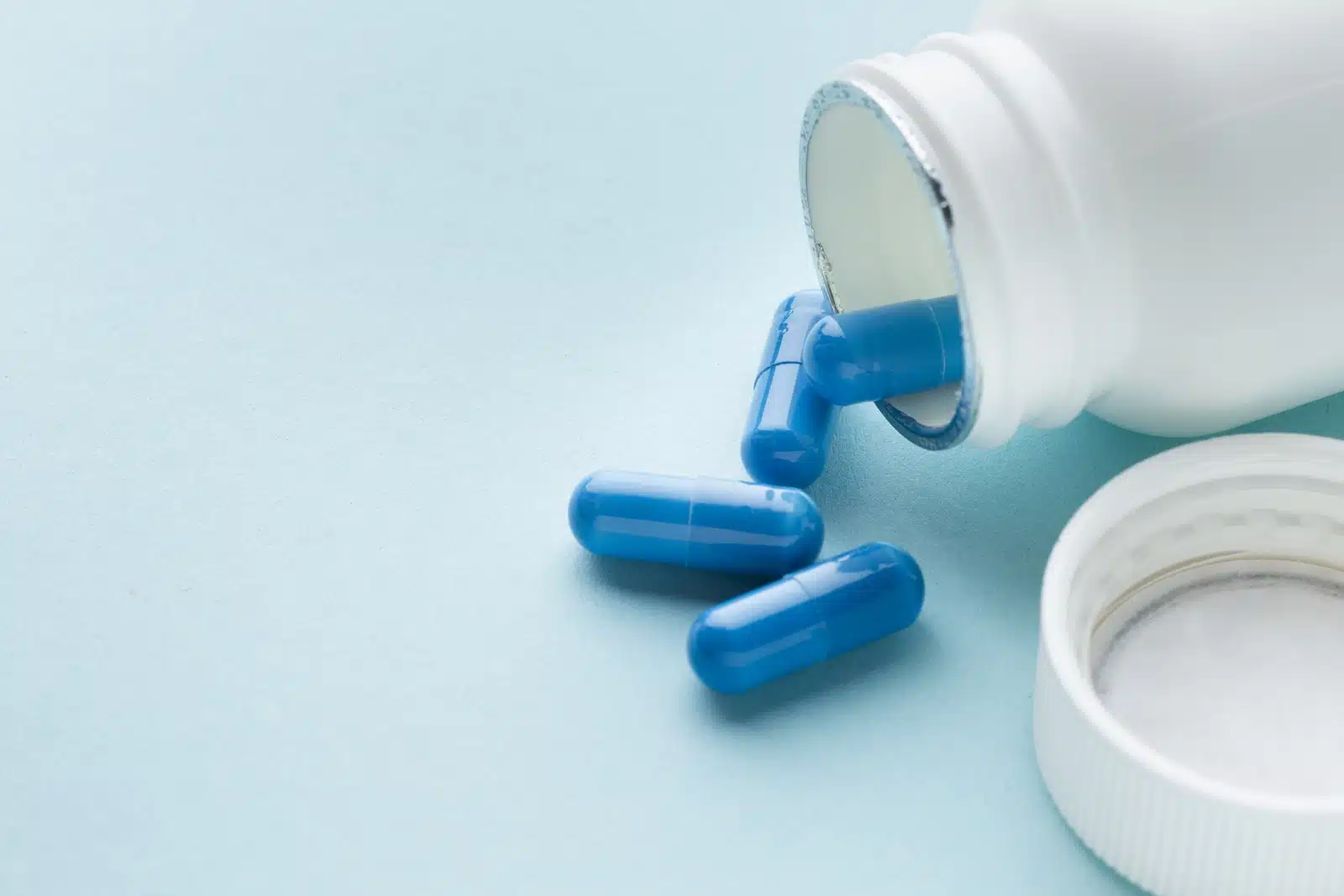Substances
What Is An Adderall Overdose? Symptoms, Causes, and Treatment

Medically Reviewed By
Dr. Po-Chang Hsu, M.D., M.S
On June 2, 2025
Written By
Amanda Stevens, BS
Updated On June 2, 2025
Substances

Medically Reviewed By
Dr. Po-Chang Hsu, M.D., M.S
On June 2, 2025
Written By
Amanda Stevens, BS
Updated On June 2, 2025
An Adderall overdose occurs when a person takes more than the medically recommended dose, whether intentionally or accidentally. Common causes include taking higher doses than prescribed, using someone else’s prescription, or combining Adderall with other substances—especially stimulants, alcohol, or certain antidepressants.
Numerous symptoms can indicate an Adderall overdose, especially an increased heart rate, blood pressure, or heart attack. Anxiety, rhabdomyolysis, restlessness, abdominal cramps, and other symptoms are also associated with an Adderall overdose.
The cardiovascular symptoms of an Adderall overdose are easy to identify. A sudden increase in heart rate (tachycardia) and blood pressure are common symptoms of Adderall overdose. Chest pain and arrhythmias can occur, but heart attacks are rare, especially in children or teenagers.
Serotonin syndrome is a rare but serious complication that can occur when Adderall is taken with other serotonergic drugs, not a typical cause of restlessness or agitation by itself.[1] Abdominal cramps, nausea, vomiting, and diarrhea may also appear. Depending on their severity, these symptoms may be classified as minor side effects. Other side effects include headache and diminished appetite.
Rhabdomyolysis is a condition in which skeletal muscle breaks down and releases its contents into the bloodstream. Symptoms include dark, reddish-colored urine, weak muscles, localized swelling, and pain. If left untreated, rhabdomyolysis can result in kidney damage.[2]
Patients who display severe symptoms should seek immediate medical treatment. A trip to the emergency department is advised for Adderall overdose signs. For milder side effects, patients should contact their healthcare provider or call a helpline for further assistance. Maintaining open communication and attending routine check-ups with your prescribing physician is strongly recommended.
Made from a combination of dextroamphetamine and amphetamine, Adderall is used to treat conditions including ADHD (Attention Deficit/Hyperactivity Disorder) and narcolepsy. Classified by the FDA as a Schedule II drug, Adderall is a central nervous system stimulant and is taken orally.
Schedule II drugs are defined as having “a high potential for abuse.” This abuse can lead to “severe psychological or physical dependence.”[3]
The medication is available in both extended-release capsules and immediate-release tablets.
A typical daily dose of Adderall ranges between 5 mg and 30 mg. Physicians tend to prescribe smaller doses for children. Adderall is not approved for use in children under the age of 3, and extended-release formulations (Adderall XR) are typically not recommended for children under 6.[4]
Adderall is generally considered safe when used exactly as prescribed and under medical supervision, but even therapeutic use may carry risks such as cardiovascular events or psychiatric effects in some individuals. However, this medication does carry a risk of dependence and addiction, especially when misused. Taking Adderall or any prescription medication outside the primary prescribed purpose is a form of drug abuse and can have life-threatening consequences, and may require an emergency response. [5]
Not all Adderall toxicity is intentional. Some patients may accidentally take more tablets than they were prescribed.
Mixing unauthorized medications and other substances, such as alcohol, can also result in accidental overdoses. Medication guides and product labels provide warnings and precautions, but they do not comprehensively list all safe medication combinations. Patients should consult their doctor or pharmacist before combining any medications. In some cases, a well-meaning patient may forget what medications or substances are allowed. An accidental overdose of this kind may not qualify as substance abuse.
Adderall use can become problematic if it’s taken to elicit a euphoric high or to supplement other substances. The amount of Adderall required to achieve this state varies from individual to individual. The patient may knowingly mix other prescription stimulants, opioids, and controlled substances to achieve intoxication.
 Risk factors for developing an addiction include a family history of substance use disorders.
Risk factors for developing an addiction include a family history of substance use disorders.
Some patients may develop psychosis from the long-term effects of Adderall addiction. Chronic misuse of Adderall can lead to stimulant-induced psychosis, but it is not itself a direct cause of overdose. However, impaired judgment during psychosis may contribute to risky behavior, including overdose. [6]
Patients who have an Adderall addiction may be in denial or unaware of the implications(drug abuse, medication misuse, etc.). Long-term use can lead to tolerance for a particular substance. Tolerance means that, over time, the effect of the drug can diminish, even if the dose remains unchanged. To achieve the same effects, patients may increase their dose without consulting their doctor.
Unsupervised dose changes are dangerous and may increase the risk of an overdose. Medical professionals and healthcare providers will be able to diagnose substance abuse. An Adderall overdose is a strong sign that a patient may be misusing this substance.
After an overdose, a physician may reduce or discontinue the prescribed dose of Adderall. This action helps the patient “detox,” which allows the body to eliminate the drug. Patients who have suffered a heart attack or rhabdomyolysis may need to remain hospitalized. They may develop complications and require intensive care.
Patients who recover physically from an overdose may choose from different treatment options. Their physician may recommend a stay in a dedicated treatment center or an outpatient program. A dedicated inpatient treatment center typically will recommend a stay of several weeks or months. During this time, the patient’s substance use will be closely supervised.
Outpatient programs offer a combination of individual therapy, group therapy, and medication management. This treatment can include cognitive behavioral therapy (CBT), among other holistic interventions. CBT is an evidence-based therapy that helps modify maladaptive thought patterns and behaviors related to substance use. However, it does not directly change brain response in a measurable neurobiological way.[7]
Parents of children who are prescribed Adderall should carefully monitor their child’s intake. Even if the child is responsible and capable of self-administering doses, parents should always supervise.
Adults with a history of addiction should consider alternative ADHD treatment options or ask another adult to administer their medication. Beating addiction is not about completing one program or a single course of therapy. It is a process of recovery, which requires daily vigilance and commitment.
College students have used Adderall to increase alertness during long study sessions. This type of off-label use is dangerous and can lead to misuse, which increases the risk of overdose. Adults should not use Adderall without a valid prescription, whether for labeled or off-label uses. Off-label prescribing by a physician can be medically appropriate in some cases.
All patients should closely monitor their symptoms. If a patient experiences side effects regularly, they should tell their prescribing physician. Ignoring side effects is dangerous and could lead to more severe symptoms.
Anyone who has experienced an Adderall overdose should not be afraid to ask for help. Recognizing the problem is the first step toward a solution. By seeking treatment, a patient is already on a healthier path.
Below are some of the most frequently asked questions regarding Adderall overdoses
[1] Vasan, S. (2024, May 6). Amphetamine toxicity. StatPearls [Internet]. https://www.ncbi.nlm.nih.gov/books/NBK470276 /
[2] Stanley, M. (2024, December 11). Rhabdomyolysis. StatPearls [Internet]. https://www.ncbi.nlm.nih.gov/books/NBK448168/
[3][11] Drug scheduling. DEA. (n.d.). https://www.dea.gov/drug-information/drug-scheduling
[4][10] Patel, P. (2025, April 6). Dextroamphetamine-Amphetamine. StatPearls [Internet]. https://www.ncbi.nlm.nih.gov/books/NBK507808/
[5] U.S. Department of Health and Human Services. (2023, March 6). Summary of misuse of prescription drugs. National Institutes of Health. https://nida.nih.gov/publications/research-reports/misuse-prescription-drugs/overview
[6] National Collaborating Centre for Mental Health (UK). “Psychosis with Coexisting Substance Misuse.” Psychosis with Coexisting Substance Misuse: Assessment and Management in Adults and Young People., U.S. National Library of Medicine, 1 Jan. 1970. www.ncbi.nlm.nih.gov/books/NBK109796/
[7] Chand, S. P. (2023, May 23). Cognitive behavior therapy. StatPearls [Internet]. https://www.ncbi.nlm.nih.gov/books/NBK470241/
[8] World Drug Report 2023. (2023). In UNOC. Research and Trend Analysis Branch. https://www.unodc.org/res/WDR-2023/WDR23_Exsum_fin_DP.pdf
[9] Key Substance Use and Mental Health Indicators in the United States: Results from the 2021 National Survey on Drug Use and Health. (2022). [Report]. Substance Abuse and Mental Health Services Administration. https://www.samhsa.gov/data/sites/default/files/reports/rpt39443/2021NSDUHFFRRev010323.pdf
[12] Centers for Disease Control and Prevention. (n.d.). Understanding the opioid overdose epidemic. Centers for Disease Control and Prevention. https://www.cdc.gov/overdose-prevention/about/understanding-the-opioid-overdose-epidemic.html
[13] Simon, L. V. (2024, March 2). Serotonin syndrome. StatPearls [Internet]. https://www.ncbi.nlm.nih.gov/books/NBK482377/